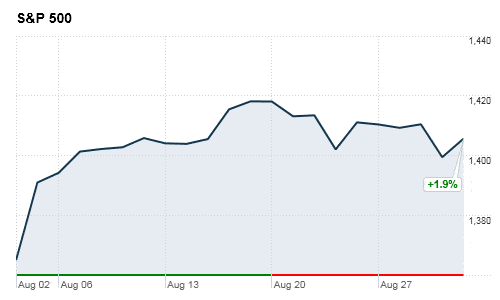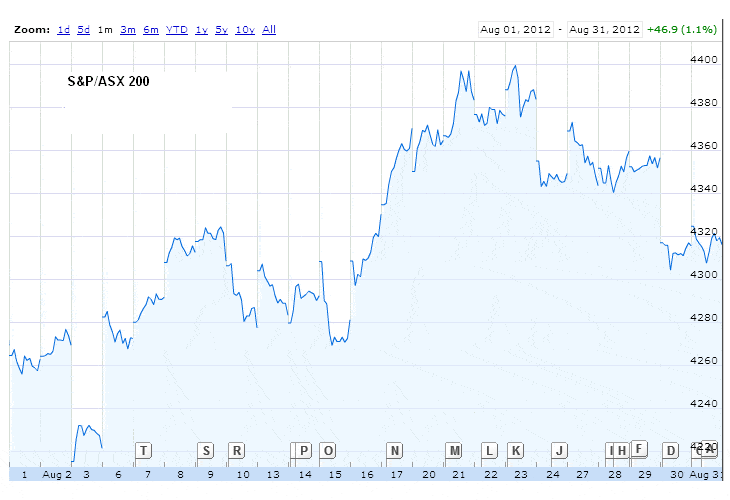The month of August ended on a positive note with investor sentiment encouraged by the possibility of economic stimulus from three major central banks: the US Federal Reserve, the European Central Bank, and the People’s Bank of China. Volatility during the Summer months tends to slow as the market community is rarely seen at full strength (during the vacation season), so while August’s progress was relatively quiet, the direction was still clear and some of the major stock indexes are now trading back near their highs for the year.
For the most part, there was little in the way of economic data to influence this sentiment so, instead, most of the attention was focused on central bank commentary with investors looking for evidence that strategies are in place to keep the economy supported into the end of the year. Since manufacturing activity in most of the major economies has seen a significant slowdown in recent months, it was not a total surprise to see prominent central bank members (in several areas) make suggestions indicating that stimulus packages could be seen in the coming months.
Market Performance for August
 While the positive monthly trends could be seen in many regions, most of the positive activity was centered in the US, with each of the three main indexes closing in the black. In August, the S&P 500 gained nearly 2%, the Nasdaq was seen higher by 4%, and the Dow showed more modest improvements of 0.6%.
While the positive monthly trends could be seen in many regions, most of the positive activity was centered in the US, with each of the three main indexes closing in the black. In August, the S&P 500 gained nearly 2%, the Nasdaq was seen higher by 4%, and the Dow showed more modest improvements of 0.6%.
This trend was visible in other regions as well, with the DAX in Germany and Australia’s S&P/ASX adding 1.1%, while France’s CAC 40 climbed 1% during the same period. One factor to note, however, is that August trading volumes in some of these markets fell to their lowest levels in 5 years. While this type of activity is generally expected during the Summer months, it should be acknowledged as this leaves markets vulnerable to reversals once trading returns to full strength in the Autumn. So, it remains to be seen if this type of performance will be matched in September.

Reasons for Positive Sentiment
Since there were some visible signs of economic weakness in the Eurozone (with unemployment reaching a record 11.3%, and Spanish unemployment alone reaching 25%), the bullish market moves were puzzling to some. But since these moves were definitive, the influential factor could be found in the commentary at last month’s Jackson Hole symposium, where Federal Reserve Chairman Ben Bernanke indicated that the US central bank is still open to the possibility of conducting another round of asset purchases (the much-discussed quantitative easing strategy) as a means for stimulating the sluggish jobs market and manufacturing productivity.
While many analysts are skeptical that these moves will actually come to fruition, Bernanke’s defense of the strategy (explaining that previous stimulus measures propped stock markets and led to the creation of roughly 2 million jobs), suggests that there is at least some potential for further action. Given that we have seen similar comments made from central bank members in the Eurozone and in China, investors will be looking more closely at economic reports in September in order to judge the likelihood of renewed central bank action to keep the global recovery moving.
Influential Factors Going Forward
Looking ahead, we will see some key indicators of whether or not these stimulus possibilities are realistic, as the focus turns back to Europe this coming Thursday at the next ECB monetary policy meeting. Here, markets will be paying special attention to the tone of the speeches made, as any evidence of concern is likely to stoke arguments of easing strategies (which should keep European markets supported for the near term). In the US, the August Non-Farm Payrolls report on Friday will give investors a better assessment of the country’s jobs market, so expect increased volatility into these events.




